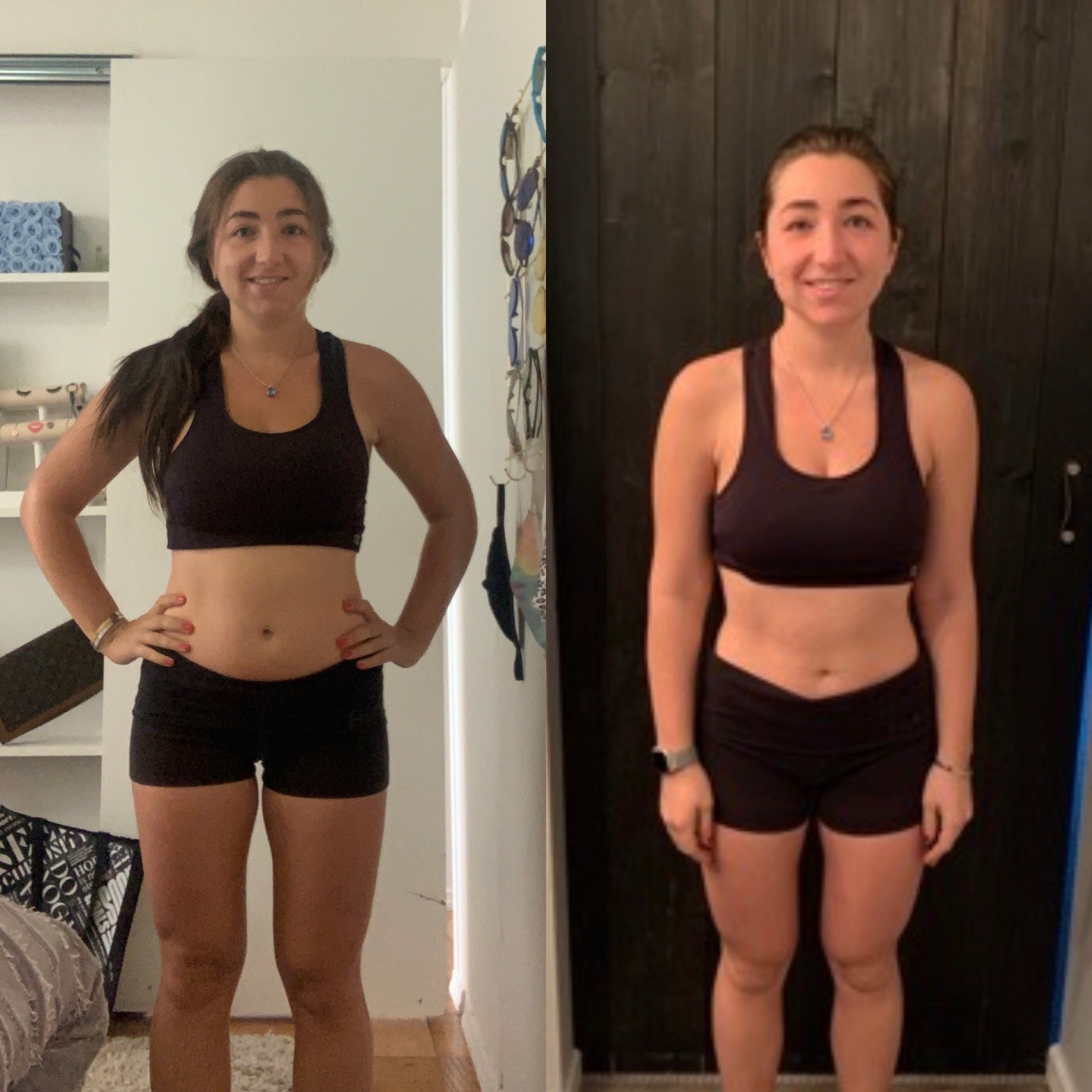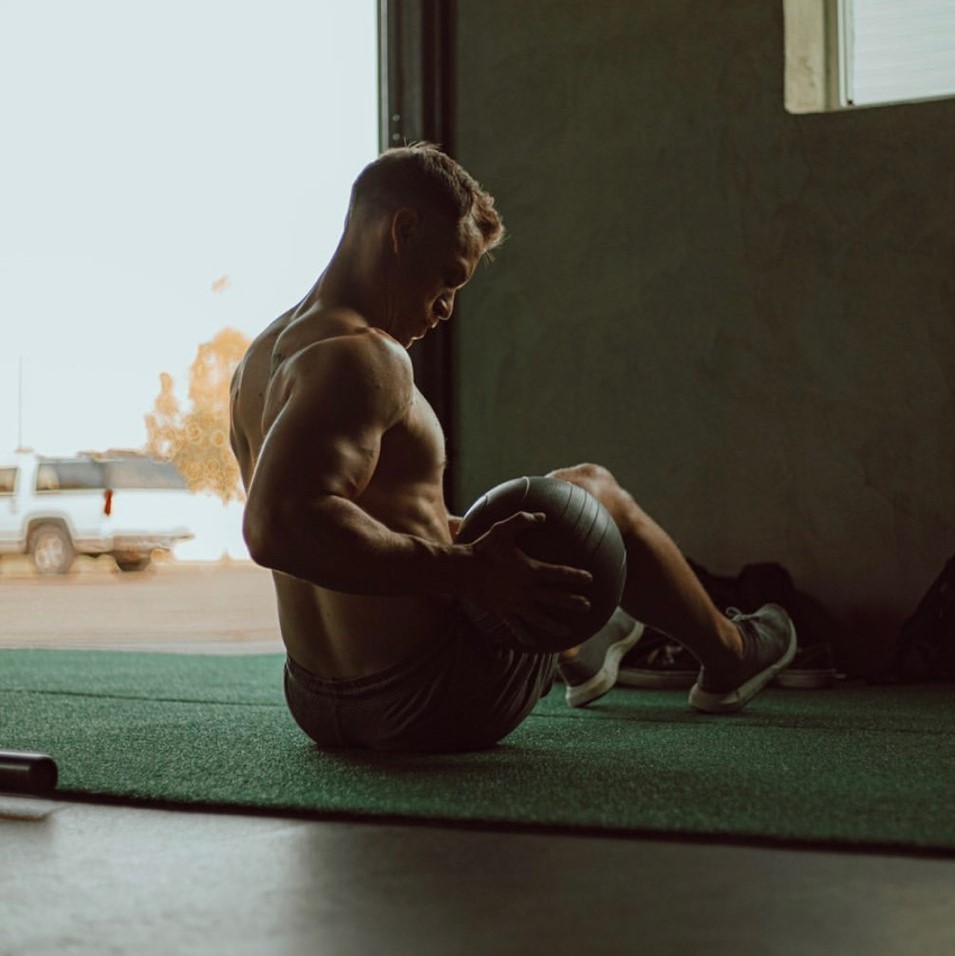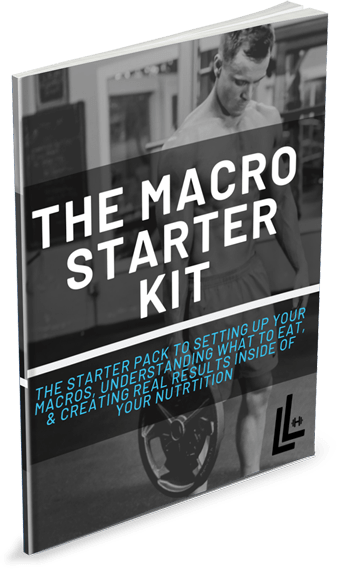How often do you wonder if what you’re doing in the gym is producing the result you want?
The first couple years of my own training was all over the place. I felt like I was throwing darts with a blind fold on most the time.
My focus points were full of debunked myths and misguided recommendations:
High reps to tone, low reps to bulk.
Change up the exercises each session to confuse the body.
Cardio for fat loss, lifting for muscle gain.
Focus on one body part per session.
The more exercises you do, the better results you’ll get.
Lifting to failure is best.
I could keep going, but I think you get the picture.
Or maybe you don’t. Maybe you haven’t come across evidence-based training principles yet in your journey.
Which means you’re in the right place at this moment.
Because I’m going to break down EXACTLY how to create a training program for yourself, or for your clients, that’s going to create better aesthetics, more strength, and ultimately reaching the goal intended much quicker.
Whether you’re male, female, old, young, mom, dad, or in between, these are the principles any well put together program will abide by.
One thing to understand before hopping into the details is the experience level of the person you’re programming for, or yourself if the program is for you.
I touch on being a beginner, intermediate, or advanced trainee often throughout this blog as that key will play a big factor in how you’re programming will need to be designed.
Generally speaking, if you’ve never focused your training on the things that I go over in this blog, you’re most likely a beginner, or at most intermediate.
If you’ve played around with the principles I touch on over the last year or two, you’re most likely an intermediate.
If you’ve been incorporating these principles for the last 2-3+ years consistently, well then, you’re probably an advanced trainee that understands everything I’m about to go over.
Let’s hop into it…
1-Training Split
The split is the way we set up your workouts and number of workouts you’ll do in each week. Traditionally, people followed a “bro split,” meaning you train 1-2 body parts per session once per week. It’d look something like this:
Day1: Chest & Triceps
Day 2: Back & Biceps
Day 3: Quads & Glutes
Day 4: Hamstrings & Calves
Day 5: Shoulders
Day 6: Arms
Day 7: Rest
Now days, science has caught up to us and any educated trainer or trainee understands this isn’t the most optimal way to go about things. Research has proven over and over that training each muscle group at least twice per week is more beneficial than just once. You could even bump that up to 3 or 4 times per week in some cases.
Here are a few options that I’ve found to work best for myself and clients over the years depending on the experience level:
Full Body x3 (beginner)
Day 1: Full Body
Day 2: Rest
Day 3: Full Body
Day 4: Rest
Day 5: Full Body
Day 6: Rest
Day 7: Rest
Upper/Lower/Full Body x3 (beginner – intermediate)
Day 1: Upper Body
Day 2: Rest
Day 3: Lower Body
Day 4: Rest
Day 5: Full Body
Day 6: Rest
Day 7: Rest
Upper/Lower x4 (intermediate)
Day 1: Upper Body
Day 2: Lower Body-
Day 3: Rest
Day 4: Upper Body
Day 5: Rest
Day 6: Lower Body
Day 7: Rest
Upper/Lower/Push/Pull/Lower x5 (intermediate – advanced)
Day 1: Upper Body
Day 2: Lower Body
Day 3: Rest
Day 4: Push (chest, shoulders, triceps)
Day 5: Pull (back & biceps)
Day 6: Lower Body
Day 7: Rest
Push, Pull, Lower x6 (advanced)
Day 1: Push
Day 2: Pull
Day 3: Lower
Day 4: Push
Day 5: Pull
Day 6: Lower
Day 7: Rest
You’ll notice that each body part is being worked at least twice per week. In order to do this, more body parts are worked per session. I’d recommend choosing a split that you think you’ll enjoy and be most likely to stay consistent with dependent on your experience level.
If you have a busy life with a full time job and family/social life, choosing a split that requires less days in the week might be more optimal for you so that it doesn’t add a lot more stress to each week.
If you don’t have as busy of a schedule, or just really enjoy the gym each day, choosing a split that allows for more training days each week might make the most sense.
My recommendation is to just be realistic with yourself about what you can sustain. More days in the gym doesn’t mean better results. Better consistency means better results. Don’t confuse the two.
Whenever I program for a new client, I ask how many days a week they can commit to a training plan, I’ll then usually subtract one day from what they tell me and create their first 4 weeks. If they prove they can be consistent with that amount of days, we’ll then up it to their desired amount if they’d like.
Consistency is the foundation to any successful program.
2 - Exercise Selection & Variations
Finding exercises that fit your experience level and complement one another is key. There are 7 exercise variations that should be included each week to ensure you’re building strength and muscle in all areas of the body.
Sure, as a male or female, you may have different parts of your body you’d like to emphasize more than others which is totally understandable, but making sure to include each of these variations to prevent harmful imbalances is crucial to any functional program:
- Horizontal Press
- Vertical Press
- Horizontal Row
- Vertical Row
- Hip Hinge
- Squat
- Single Leg Squat
The specific exercise you choose to accomplish this movement pattern will depend on the experience level and capability.
An intermediate-advanced trainee could perform movements like:
- Barbell Bench Press (horizontal press)
- Standing Barbell Overhead Press (vertical press)
- Pendlay Row (horizontal row)
- Weighted Pull Up (vertical row)
- Barbell Deadlift (hip hinge)
- Barbell Squat (squat)
- Weighted Bulgarian Split Squat (single leg squat)
A beginner-intermediate trainee would be better off starting with movements like:
- Dumbbell Bench Press (horizontal press)
- Seated Dumbbell Shoulder Press (vertical press)
- Seated Cable Row (horizontal row)
- Cable Pull Down (vertical row)
- Kettlebell Deadlift (hip hinge)
- Kettlebell Goblet Squat (squat)
- Bodyweight Walking Lunge (single leg squat)
There are plenty of other variations to choose from in both instances, these options are just examples to understand the concept.
Once you have the 7 pillars in order and selected, you can then start adding more accessory and/or isolation movements to the selected body parts you’d like to further emphasize or strengthen, like more direct glute work, arm work, chest work, etc.
Which leads to the next step:
3 - Volume
Your initial thought might be what is volume? It’s pretty simple really, volume is the amount of sets you are performing for each muscle group. This is important!
The more experience and years under your belt you have, the more volume you’re going to need to maintain and/or create progress.
The less experience you have, the less volume you’re going to need to maintain and/or create progress.
Here is the guideline that I tend to follow and found to work for each experience level:
Beginners: 6-12 sets per muscle group
Intermediates: 8-15 sets per muscle group
Advanced: 8-20 sets per muscle group
Depending on your category, the muscle groups you want to emphasize the most will be at the higher end of these ranges and the muscle groups you are looking to maintain will be at the lower end of these ranges.
You might be thinking, “Great info, but what about rep ranges?”
Great question. It’s entirely dependent upon your goal.
If you’re more focused on strength rather than hypertrophy (muscle gain), program 2/3 of your work in the 2-6 rep range and the other 1/3 in the 6-15 rep range.
If you’re more focused on hypertrophy rather than strength, program 2/3 of your work in the 6-15 rep range.
But understand this, just because you’re focused on strength work doesn’t mean you won’t gain any muscle, and just because you’re focused on muscle doesn’t mean you won’t gain any strength. They work hand in hand, but the different rep ranges emphasize one over the other in their respective purposes.
4 - Progressive Overload
Any program must have a plan of progression to achieve the desired result. This is defined as progressive overload.
Progressive overload can be achieved in many ways. First and fore-most, it’s achieved through bettering form. Once proper form is achieved, the simplest way to keep progressing is by adding weight to the main compound lifts in each session from week to week.
In a beginner program, using linear progression makes the most sense. It’d look like this:
(weight used x reps)
Week 1: 135×5
Week 2: 140×5
Week 3: 145×5
Week 4: 150×5
Week 5: 155×5
Week 6: 160×5
Notice the weight increases each week and reps remain the same to create progressive overload.
In an intermediate-advanced program, progression schemes will need to get a little more sophisticated as an intermediate lifter will have a harder time progressing each week without hitting a plateau. Here I’d suggest using linear periodization. It’d look like this:
(weight used x reps)
Week 1: 135×7
Week 2: 140×6
Week 3: 145×5
Week 4: 140×7
Week 5: 145×6
Week 6: 150×5
Notice the weight gets heavier each week, but the reps decrease by one. After 3 weeks of heavier weight and lower reps, you then start over at the top of the rep range with a slightly heavier weight and repeat to create progressive overload.
Although form and weight are where you should start, they aren’t the only ways to progress. You can go the route of reps performed, sets performed, time under tension, added range of motion, and more.
I aim to include these different forms of progression generally on accessory and isolation movements. Particularly using the double progression method which includes progression through reps performed AND weight used. It’d look like this:
(weight used x reps)
Week 1: 135×8
Week 2: 135×9
Week 3: 135×10
Week 4: 140×8
Week 5: 140×9
Week 6: 140×10
You can get creative here and use different forms of progression to keep things fun and enjoyable, just make sure at the end of the day it’s set up for progressive overload to create continuous results inside the program.
5 - Intensity
Now you know the type of split to set up, what exercises to do, how much volume to do dependent on your experience level, and how to progress from week to week, it’s important to understand intensity and why it matters. Intensity is simply how hard (or not hard) you’re working throughout the program relative to failure.
This is where the handy tool of Reps In Reserve (RIR) comes into play. A beginner isn’t generally going to need to worry about this as much because they’re still new to training and just trying to acquire the skill before adding intensity.
But once you have the skill down, it’s time to start adding intensity with RIR in the back of your mind throughout each week. Without a decent understanding of this, you can make or break the success of a program in a lot of circumstances.
RIR is simple. It’s a number scheme that you use in your head to judge how difficult the sets you’re doing are relative to failure.
0 RIR would be reaching complete failure on a lift.
1 RIR would be one rep shy of failure.
2 RIR would be two reps shy of failure.
3 RIR would be three reps shy of failure.
4 RIR would four reps shy of failure.
Hopefully you get the picture if I was to keep going.
When building a program, you’ll want to start around an RIR of 2-4 dependent on the progressive scheme being used in that lift so that you leave room for progression in coming weeks.
By hitting RIR 0 or 1 in the first week, you’re going to find it extremely hard to continue progressing in coming weeks and maximize your potential strength gains and muscle development.
A successful program always plans ahead of time. Which is where periodization comes into play.
6 - Periodization
Periodization is most likely the answer to all the questions that are still spewing in your mind like:
“How long should a program be?”
“When do I switch up the exercises?”
“When do I switch up the rep ranges?”
“When do I add volume?”
“How do I help prevent hitting a wall and stalling progressive overload?”
These are all questions I had when first learning how to program. To be 100% honest, there isn’t a definitive answer to any of them.
This is what keeps proper programming a bit of a “craft” or “artform” rather than just a science with proven answers to EVERYTHING.
What I can do is tell you how what I’ve found to work when periodizing my programming for clients and myself.
Program length
I like to create goal focused programs in 12-week blocks that are split into 3 mini blocks that each last 4 weeks. Meaning I’m really creating 3 programs that are built on top of one another to create an entire 12-week program.
The correct terms for this would be a 12-week meso-cycle with 4 week micro-cycles built in.
Throughout these different blocks I’m periodizing the exercise selection, volume, progression, and intensity. Sounds confusing, but it’s not. Periodization is used to keep the program fun, stimulating, avoid plateaus, and help manage fatigue mainly.
How to periodize exercises
Most well put together programs won’t have exercises being switched out each week. Remember you need to create progressive overload, so keeping exercises around long enough to progress at them becomes important.
I generally like to keep the main squat, deadlift, and bench variation consistent throughout the entire 12 week program and switch out the accessory and isolation movements every 4-week block. This allows the program to hammer away at progressive overload in the squat, deadlift, and bench variation, while adding variety to the rest of the workout so you’re getting the best of both worlds.
How to periodize volume and intensity
Both will basically be periodized for if you create the progression schemes correctly that I already laid out earlier. A beginner following the linear progression model won’t need much periodization to their volume or intensity because of the fact they can make linear progress easier than someone who has more experience. Hence the term linear progression.
An intermediate – advanced lifter will benefit from periodization inside volume and intensity to make continual progress easier though. As the skill of lifting gets more advanced and the stronger the trainee gets, the harder it becomes to continually add weight to the bar each week without a decrease in reps.
Which is why I suggest the linear periodization model. As you increase weight, you decrease reps. Which means you’re adding intensity but decreasing volume as you go – a form of periodization.
If you’ve already forgot the two terms linear progression and linear periodization, go back to the progressive overload section to refresh your memory on what they look like.
How to further prevent plateaus in progressive overload
De-loads are a form of periodization as well. They’re used to manage fatigue throughout a program to keep progressive overload continuing in ways that progressive schemes can’t.
As you keep adding more and more load to each session, the body’s fatigue builds higher and higher. This fatigue must be managed at one point or another or else progress will end up going backwards given enough time. To manage it properly a de-load system needs to be put in place where volume is dropped by around 30-50% for around a weeks’ time every 4-12 weeks to promote recovery and get back to a 100% performance and avoid over-training.
Over-training is where the body is pushed too hard and progress goes backwards because fatigue was never managed properly, and overall health becomes an issue.
Generally, the more advanced a trainee is, the more often they’ll need de-loads (4-6 weeks). The less advanced a trainee is, the less often they’ll need de-loads (6-12 weeks).
Think of it as taking one step back to always be able to take two steps forward in the future.
I emphasized this at the first of this read, but I’m going to do it one more time – knowing your experience level, or the person’s experience level you’re programming for, is crucial to creating a program that is going to be the most beneficial to that person specifically.
In Closing
I’m fully aware this is a ton of info. Hopefully it’s helped you better understand the backside of a successful, result based training program.
You’d think it’s as simple as getting into the gym and lifting some weight. Although that’s a good place to start and better than sitting home on the couch, taking the time to understand what is going to produce the result you want is key to maximizing the time you’re investing into working out.
If you’ve enjoyed all this information and found a lot of value from it but would still like the help from a professional to put together you’re initial programming for you feel free to reach out.
I’d be happy to take all these different principles needed and construct them into an individualized plan that is set up for your schedule, goals, and experience level to help you maximize your results for the next 12 weeks.
Shoot me an email and we can discuss your goals and get you headed down the right track.
Because let’s be honest, working with a qualified coach will always be the fastest track to your success and a better understanding for your future results.
In the next blog we’ll be discussing how to most efficiently create a day’s workout inside of a program constructed like this. So, stay tuned!









